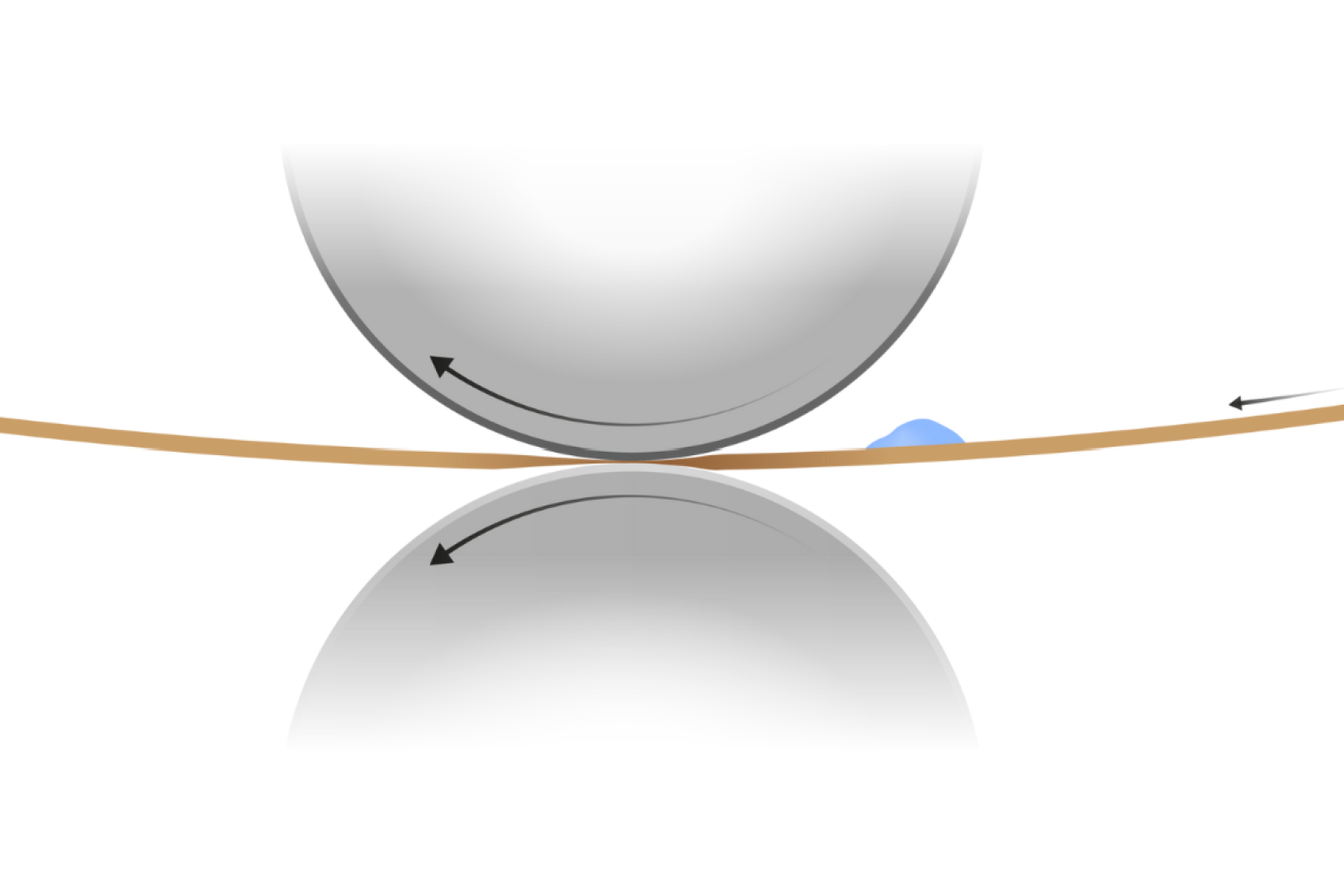Press vibrations - it’s not the felt!

Production output is often slowed down for the wrong reasons
When press vibrations take place in the papermaking process, machine speed has to be slowed down. This has an immediate negative effect on output and ultimately production targets. Replacing the felt is often the expensive solution papermakers reach for, but it is only addressing the symptoms. Usually, the origins of press vibrations can be found elsewhere in the machine. In fact, it actually comes down to basic physics. Understanding this ahead of time can help you extend the life of your next felt.
Normal operations in the press section
After the forming section, the paper web is picked up by a wet felt and transported to a number of presses. The sheet is still very wet and also the one or two felts that carry the web through the press nip contain a lot of water. In the mid nip, the local hydraulic pressure forces the water to move, preferably from the paper sheet to the felts (in the case of uhle box dewatering) or even through the felt (in the case of nip dewatering). At the nip exit, the web and the felts each go their separate ways. The sheet goes to the next press or dryer section, the felt is prepared for a new run through the press nip.
It’s not the felt! Or is it?
Things get swinging when the water inside the felt is not evenly distributed. Just imagine there is one spot inside the felt that contains more water, for whatever reason. When this spot arrives at the press nip entry, the extra volume has to pass through this very narrow area in a fraction of a second. Where can the excess water go? When the full storage volume in the nip has been used already, the only possibility left is that the water will open up the nip. To help you visualize it: a relatively small ‘bump’ of water in the felt will push both press rolls away from each other so that the water bump can pass.

Due to the high press load, both rolls will be pushed towards each other as soon as the water bump has passed. Chances are that the press rolls come back with such force that the felt at that spot becomes deformed, or super-compressed. This area of the felt will have less void volume and therefore carry a little less water. Unfortunately, this becomes a problem at the next felt revolution: now the loaded press rolls are able to ‘fall down’ a fraction of a second, making the super-compressed area just a little bigger. After the super-compressed area will follow normal felt, which carries a normal amount of water, forcing the nip open again. Vibrations have officially taken off!

Key to this process is that water is strong enough to move loaded press rolls, even though they weigh tons. Why this happens comes down to basic physics. Liquid water cannot be made more compact because of its state of matter in the felt. Water as a liquid is not compressible. Under pressure, water tries to move away – which we happily call ‘dewatering’ – and when that’s not possible, it simply creates a counterforce against the press roll pressure. That is when the vibrations start.
Clearly, the felt is an important factor in press vibrations. It has to move a lot of the incompressible water and even the smallest irregularities in water transport could initiate press vibrations. For the papermaker it is important to keep the water content of his felts as constant over the whole loop/circumference as possible, to avoid the initial ‘water bump’ entering the nip. In my next blog, I’ll discuss some of the possible causes and how to avoid them.
Want to learn how you can monitor your felt? Download our whitepaper on How to Assess Press Felts
